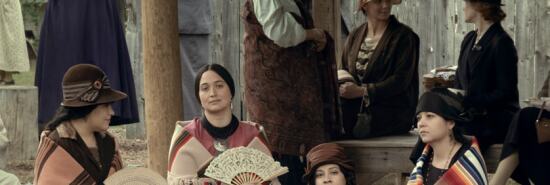
Killers of the Flower Moon is not your typical Scorsese film
Harry Khachatrian
Video Embed
Martin Scorsese is widely recognized for crafting films centered on gritty criminal underworlds and the lavish lifestyles of their gangster overlords, from Mean Streets (1973) to The Wolf of Wall Street (2013) and, most recently, The Irishman (2019). However, Scorsese’s latest crime epic, Killers of the Flower Moon, veers away from many of the venerable filmmaker’s customary tropes.
Whereas Scorsese’s typical crime dramas are propelled by alluring antiheroes, Flower Moon entirely abandons the slick veneer that often glamorizes his charismatic killers and their escapades. Adapted from the nonfiction book by American journalist David Grann, Killers of the Flower Moon delves into a series of murders of the Osage people in the 1920s following the discovery of vast oil reserves on their land.
NOVEMBER TO REMEMBER: SHEILA JACKSON LEE LEADS ROUNDUP OF INTRIGUING MAYORAL RACES
Leonardo DiCaprio, in what could arguably be the finest performance of his acting career, portrays Ernest Burkhart: a war veteran who returns home to Osage County, Oklahoma, in 1920 with hopes of finding work through his uncle.
Ernest’s uncle, William Hale (played by Robert De Niro), is a wealthy and well-connected cattleman with his eyes firmly set on the Osage fortune. He concocts a scheme to marry off Ernest to a wealthy Osage oil family, with the sinister plan of systematically murdering them to seize their inheritances.
Scorsese’s depiction of Hale, as well as the county’s white Americans more broadly, renders some of his previous portrayals of mob families almost benign in comparison. Whether driven by a purely artistic choice or a broader sense of responsibility to the story’s victims, Scorsese abstains from the upbeat, pulsating rhythms that fuel the first half of many of his gangster classics.
Watching Goodfellas, every guy yearned to be Jimmy Conway, regardless of the number of delivery trucks he robbed. However, DiCaprio’s portrayal of Burkhart presents us with a morally bankrupt, dim-witted, and impressionable young man eager to win the approval of his influential Uncle Bill. “I do love that money,” he declares in one scene, “almost as much as my wife,” referring to Mollie (Lily Gladstone), an Osage oil family heiress he courted under his uncle’s manipulation.
Mollie, the soul of Scorsese’s stirring epic, is swiftly drawn into Ernest’s embrace. Beguiled by his naive, disarming demeanor, she falls for him. “Can you find the wolves in this picture?” Ernest reads aloud in an allegorical scene, showcasing an illustrated book.
Perhaps what rendered Scorsese’s previous portrayals of gangsters almost affable in contrast was their transparency. They were loud and boisterous and made no effort to conceal their true nature. However, the wolves that haunt Osage County come disguised as sheep. Covert and cunning, Hale feigns friendship with the Osage family, all while orchestrating their downfall.
Before long, members of Mollie’s family begin to be mysteriously murdered, one after another, all without any police investigation or inquiry. Perennially bereaved and torn between her love for her husband and her suspicions regarding the serial murders, Lily Gladstone effortlessly ranks among the most complex and tormented heroines in Scorsese’s cinematic canon.
It isn’t until Mollie, afflicted with diabetes, travels to Washington, D.C., imploring the federal government to investigate her family’s murders, that Tom White (Jesse Plemons) arrives in Osage County. In the third act of the film, White, representing the then-nascent FBI, begins to unravel the insidious plot.
Robbie Robertson, whose final composition before passing away was the score for Flower Moon, marks a stark departure from Scorsese’s familiar jukebox mix of “Gimme Shelter” and other classic rock hits. Instead, a thumping drum beat, vibrating strings, and other elements of dissonance accompany the tension, accentuating the atmosphere in which the story is set.
A new Martin Scorsese picture starring Robert De Niro invariably promises a cinematic spectacle; their latest venture, Killers of the Flower Moon, certainly delivers on that promise. With a sprawling run time of three-and-a-half hours, it’s an ambitious endeavor aimed at shedding light on a grim and overlooked chapter of American history.
CLICK HERE TO READ MORE FROM THE WASHINGTON EXAMINER
Through this expansive narrative, Scorsese transports the audience to 1920s Osage County, delving into the lives of the Osage people, their culture, and traditions while underlining the brewing tensions between the local government and Native American oil barons. The sinister underbelly of Osage County is laid bare through Scorsese’s adept storytelling, and by the end, you can see the wolves.
Harry Khachatrian (@Harry1T6) is a film critic for the Washington Examiner’s Beltway Confidential blog and a computer engineer in Toronto pursuing his MBA.
